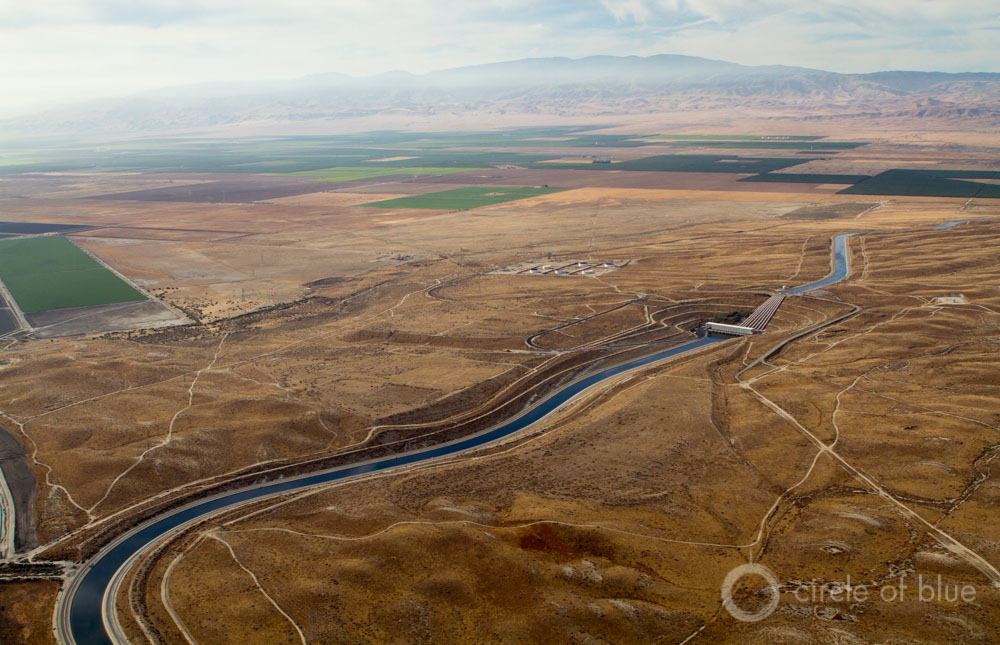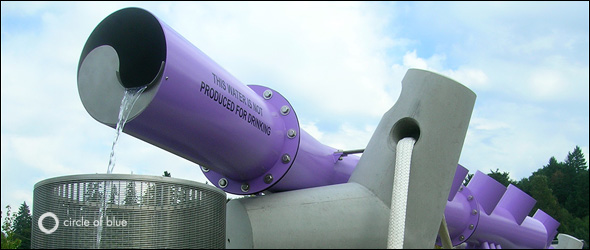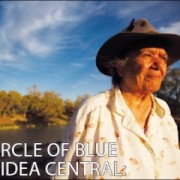Federal Drought Policy Need Not Wait for Congress
Natural resources agencies have the authority to change practices on their own, conservation groups argue.

By Brett Walton
Circle of Blue
For more than a year, Congress debated the merits of environmental protection, water infrastructure investments, and the mechanics of moving water around California without finding enough common ground to pass legislation in response to the drought emergency in the American West.
But the federal agencies that are responsible for natural resources need not wait for Congress, according to a trio of national conservation groups. There are a number of actions that the Bureau of Reclamation, U.S. Department of Agriculture, the U.S. Army Corps of Engineers, and other agencies can take today that do not require approval from Capitol Hill and will better prepare the United States for a future of water instability.
The recommendations developed by the Nature Conservancy, Theodore Roosevelt Conservation Partnership, and Trout Unlimited include:
- The U.S. Army Corps of Engineers and the Bureau of Reclamation could update the operating manuals for reservoirs, to store more water. Some reservoirs are filled and drawn down based on calendar dates rather than hydrological conditions.
- The Bureau of Reclamation should not fund the pumping of groundwater from stressed aquifers and it could encourage more transfers of water between buyers and sellers.
- The Internal Revenue Service could change its rules to allow the donation of water rights for instream flows to be written off as a tax deduction.
- The U.S. Department of Agriculture could use conservation funds to reduce the demand for irrigation water, by purchasing easements during drought and funding efficient irrigation.
- All agencies could reexamine their application guidelines for drought funding, to open the programs to more participants, and they should coordinate their conservation programs, such as Reclamation’s WaterSMART.
- Funds should be granted to projects that provide multiple watershed benefits, for rivers, farms, and cities.
The fixes that are proposed by the three conservation groups are not the sort of solutions that are made for billboards or bumper stickers. They are the behind-the-panel tinkering with the federal government’s operating system. But changes in how the agencies make decisions and how they allocate federal funds for water projects, it is hoped, will result in a smarter, more effective response in future droughts.
“As the current crisis in California demonstrates, the worst time to respond to a drought is in the midst of one,” the groups write in a set of recommendations addressed to representatives from the U.S. Department of Agriculture and the National Oceanic and Atmospheric Administration. “At that point, there are few, if any, good options available to avoid the worst impacts of drought, and combined with enflamed passions and politics, reaching consensus on solutions is nearly impossible.”
Thus, agencies need to think ahead.
Two basic ideas thread the recommendations, according to Laura Ziemer, water policy advisor for Trout Unlimited. First, agencies must use their funds and authority to ensure that solutions have benefits for multiple sectors, from ecosystems and farms to cities and industries. Agencies could require such evidence in grant applications and assign it a high priority as they rank potential projects, she said.
Ziemer pointed to Montana’s Sun River, which flows eastward from the Rockies, as an example of efficient irrigation methods being paired with better soil management to restore river flows and boost trout numbers.
Second, federal agencies should focus on watersheds, both ecologically and politically. Ecologically, this means protecting the forested uplands, where river flows originate, as well as funding downstream projects that increase the land’s capacity to store water. In political terms, the agencies should encourage planning at the watershed level. Basins with a long history of interaction, such as the Black Foot River in Montana, are more successful in responding to drought, Ziemer told Circle of Blue. At the federal level, the Bureau of Reclamation’s basin study program, which entails detailed assessments of water availability and options for addressing shortfalls, is one avenue for collaboration.
The recommendations came out of a July 15 drought symposium hosted by the White House and organized by the National Drought Resilience Partnership, the Obama administration initiative established in 2013 to help communities adapt to dry conditions. The recommendations were addressed to Ann Mills, deputy undersecretary for natural resources and environment at the U.S. Department of Agriculture, and Peter Colohan, senior advisor at the National Oceanic and Atmospheric Administration. They were also received by the Bureau of Reclamation, a member of the drought partnership whose management practices are a frequent target in the seven-page document.
The ideas were met with a warm reception. Saying that a broad dialogue is the intent of the drought partnership, Dan DuBray, the chief of public affairs for the Bureau of Reclamation, called the recommendations “constructive.”
“Reclamation agrees with the comments that we should continue the constructive dialogue begun at last month’s White House Drought Symposium and work with stakeholders — including sportsmen and conservationists — to harness effective federal actions that contribute to drought resiliency,” DuBray wrote to Circle of Blue, in an email.
DuBray said that some of the ideas could move forward within months while others will take longer, but he did not identify details. He noted that Reclamation is “eager to convert plans into action” for the watersheds that have completed a supply and demand analysis through the basin study program. A dozen basins in the American West, including the Colorado River, Lower Rio Grande, and Yakima River, have completed a study.
Ziemer said that the package of recommendations that the conservation groups submitted was, in large part, a consensus from participants in the symposium, federal agencies included. But Ziemer, who attended the symposium, also realizes that the path from discussion to implementation is not always smooth.
“There was no vocal opposition,” Ziemer explained, referring to the mood at the symposium. “But silence does not indicate assent.”
Brett writes about agriculture, energy, infrastructure, and the politics and economics of water in the United States. He also writes the Federal Water Tap, Circle of Blue’s weekly digest of U.S. government water news. He is the winner of two Society of Environmental Journalists reporting awards, one of the top honors in American environmental journalism: first place for explanatory reporting for a series on septic system pollution in the United States(2016) and third place for beat reporting in a small market (2014). He received the Sierra Club’s Distinguished Service Award in 2018. Brett lives in Seattle, where he hikes the mountains and bakes pies. Contact Brett Walton










As an employee with an agency within the USDA, I can say we DO fund efficient irrigation. Most of my work day that’s exactly what I do. However, there is no coordination to control the overall use of water. If you improve irrigation efficiency, there is nothing to keep people from using the same amount of water, and putting more land into production. And in California, the lack of surface water is causing a huge shift to groundwater use. These more efficient irrigation systems require reliable water, and it has to be pressurized. It is difficult for the existing surface water delivery system to provide that.
If the other agencies function like the two I’ve worked for, a number of the recommended actions DO require action from Capitol Hill. Agencies may be able to make some of those management shifts, but the majority are likely tied to funding and targets, which are set in a chain reaction from congress. The recommendations (as I read them here) assume that the agencies are more mobile than Capitol Hill. My experience is generally the opposite.